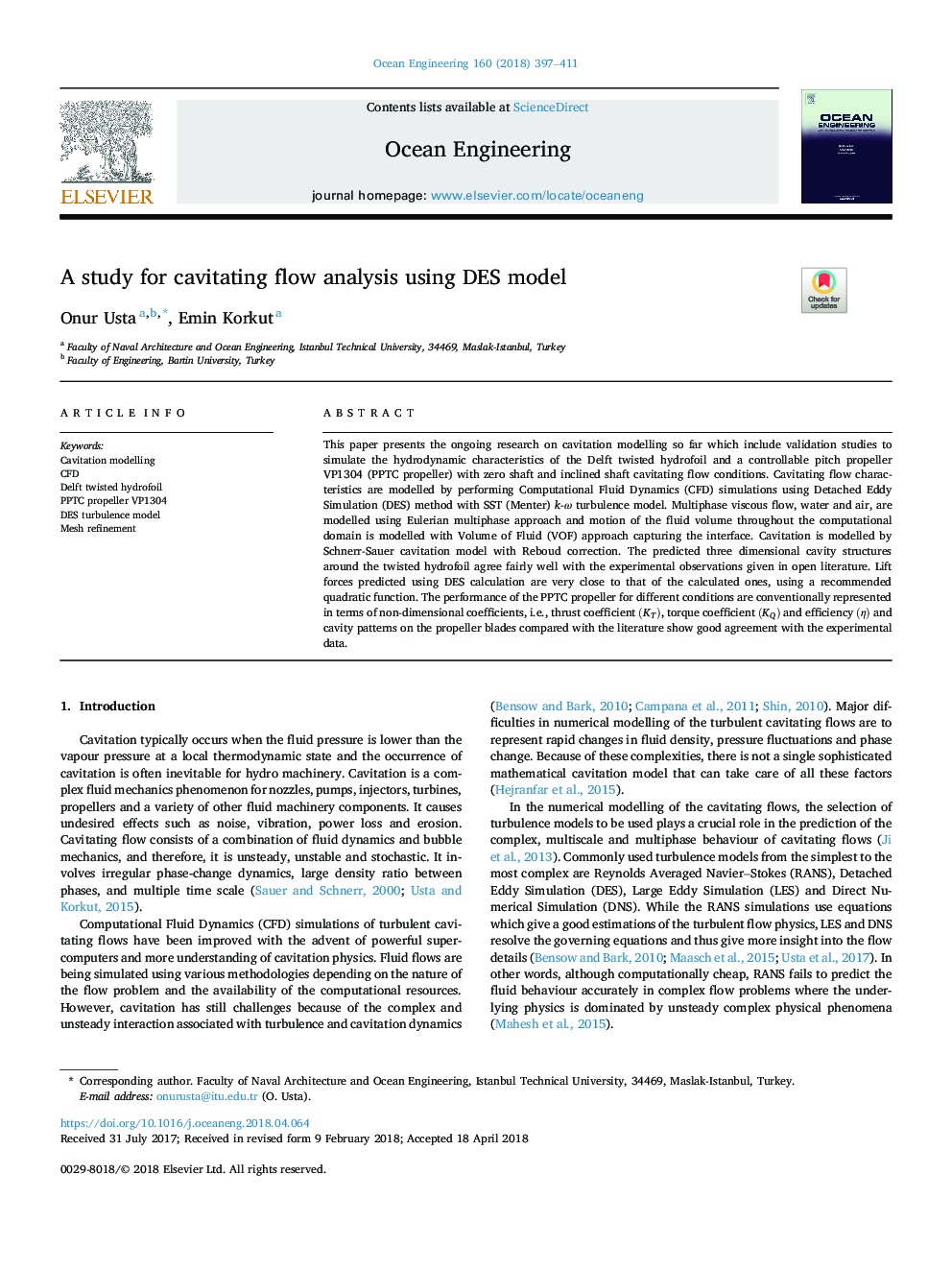| Article ID | Journal | Published Year | Pages | File Type |
|---|---|---|---|---|
| 8062301 | Ocean Engineering | 2018 | 15 Pages |
Abstract
This paper presents the ongoing research on cavitation modelling so far which include validation studies to simulate the hydrodynamic characteristics of the Delft twisted hydrofoil and a controllable pitch propeller VP1304 (PPTC propeller) with zero shaft and inclined shaft cavitating flow conditions. Cavitating flow characteristics are modelled by performing Computational Fluid Dynamics (CFD) simulations using Detached Eddy Simulation (DES) method with SST (Menter) k-Ï turbulence model. Multiphase viscous flow, water and air, are modelled using Eulerian multiphase approach and motion of the fluid volume throughout the computational domain is modelled with Volume of Fluid (VOF) approach capturing the interface. Cavitation is modelled by Schnerr-Sauer cavitation model with Reboud correction. The predicted three dimensional cavity structures around the twisted hydrofoil agree fairly well with the experimental observations given in open literature. Lift forces predicted using DES calculation are very close to that of the calculated ones, using a recommended quadratic function. The performance of the PPTC propeller for different conditions are conventionally represented in terms of non-dimensional coefficients, i.e., thrust coefficient (KT), torque coefficient (KQ) and efficiency (η) and cavity patterns on the propeller blades compared with the literature show good agreement with the experimental data.
Keywords
Related Topics
Physical Sciences and Engineering
Engineering
Ocean Engineering
Authors
Onur Usta, Emin Korkut,
